|
PUERTO RICO'S NATURAL AND MAN-MADE DISASTERS Puerto Rico was hit by two hurricanes in the last five
years, both in the month of September. The first blow was María in 2017, a
category 5 hurricane which devastated the island’s electrical grid and left
some sectors of the population without electricity for up to a year. CATACLYSM NO. 1: MADE IN THE USA Between 1996 and 2006, the United States Congress phased out a section of the Internal Revenue Code which provided tax incentives to corporations doing business in US possessions. Although the provision, known as Section 936, increased the economic dependence of Puerto Rico on foreign capital and had other problems,[2] it generated substantial investment and increased employment. Its phaseout generated a cataclysmic fall in manufacturing employment, from 158,000 jobs in 1996 to 71,400 in 2019. This decline is captured in the graph below.[3] There has been no economic growth in the island since 2006. In the space of ten years, more than half of Puerto Rico’s manufacturing jobs evaporated. The multiplier effect of this drastic fall in employment was immense, and the island entered a period of long–term economic contraction, emigration, and population decline. The 21st century started in Puerto Rico under the mark of a catastrophic economic contraction which was, literally, “made in the USA,” as the residents of the island have no say in the Congress that changed the fiscal and economic regulatory environment for its economy. A social crisis ensued. Emigration from the island soared. Throughout the 20th century, Puerto Rico’s colonial economy was never able to provide enough employment to its population, and out–migration has been a steady component of the economic structure, especially since World War II. The great migration of the 2000’s was actually larger than the great migration of the 1950s, which firmly established many Puerto Rican communities in the United States, especially in New York. There are two major differences between the current flow of out–migration and that of the 1950’s. The current flow has as its principal destination the state of Florida, whose Puerto Rican population (1.2 million) has now surpassed that of New York (1.1 million). Secondly, unlike the migration of the 1950s, the current wave of the 21st century has resulted in an absolute decline of the island’s population. According to the US Census, Puerto Rico had 3,810,605 inhabitants in the year 2000, and 3,193,354 in 2018, a decline of 16% in 18 years. In 2021, the population rebounded a bit, to 3,263, 584, on account of the return of some of the population which left the island after Hurricane María.
The economic and social effects of the decline in population were compounded by the age–composition of the decline. The population 18 years old or younger fell catastrophically by a full 36%, from 903,295 in 2010 to 572,331 in 2019.[4] This, together with the government’s neoliberal insistence on austerity measures, resulted in the closure of many schools, and led to a drastic reduction in the number of teachers. Of the 1,523 schools operating in the academic year 2006–07, only 850 remained in operation in academic year 2018–19. In other words, 44 percent of the island’s schools closed down in the last decade.[5] One result of out–migration is that in the year 2004 for the first time the Puerto Rican population in the United States surpassed that of the island. At present, about two thirds of Puerto Ricans, counting those born in the island and those born in the 50 United States, live in one of the 50 states. While the population of Puerto Rico declined from 3.8 to 3.2 million between 2000 and 2018, the Puerto Rican population living in the 50 states increased from 3.6 to 5.8 million in the same period.
Population decline, out–migration, and the dramatic decline in the school age–population cannot be reduced to a single factor, but the downward economic spiral of the 21st century has as its prime mover the decision of the U.S. Congress to abolish the tax–incentives which attracted capital to Puerto Rico, without providing an alternative path to economic development. The crisis was in a very direct sense “made in the USA.”[6] This downward spiral occurred, in turn, in a colonial economy controlled by U.S. absentee capitalists in which a larger than normal share of the economic product is siphoned out of the island in the form of repatriated profits. As much as one third of Puerto Rico’s Gross Domestic Product leaves the island as payments to absentee capital.[7] Sooner or later, the protracted economic contraction initiated by the phaseout of Section 936 in 2006 was bound to have an impact on government finances. The government, to be sure, initiated a draconian set of cutbacks to deal with the crisis. But it also went on a borrowing spree to try to paper–over the larger crisis, which was rooted in state policy and whose effects were long–term, as opposed to being merely cyclical. Public debt expanded by 64% between 2006 and 2014, from $43 to $71 billion. Increasing indebtedness and decreasing government revenues—partly driven by the reduction in the number of taxpayers— eventually led to the downgrading of the government’s credit rating in 2013, and in 2015, the Commonwealth of Puerto Rico defaulted on its debt. Before Hurricane María, therefore, the island was in a deep economic crisis and on a downward spiral. The social dimensions of the crisis have been described in more detail in a former article in this publication.[8] We will briefly mention government austerity policies and popular mobilizations against them. To pay for increasing indebtedness acquired through an agency knows as COFINA (Corporación del Fondo de Interés Apremiante), the government increased sales taxes. The Puerto Rico “Sales and Use Tax” rate is currently 10.5%. compared to average local sales tax of 6.57% in the United States.[9] This was followed by Law No.7 in 2009, which led to the firing of more than 20,000 government employees. In 2014 Law No. 66 curtailed benefits, labor rights, and collective bargaining in the public sector. Tuition at the University of Puerto Rico was increased. While all of these measures elicited protests, the mobilizations were insufficient to reverse the measures. Instead, many individuals and households opted to migrate to the United States in search of better work and living conditions. Out–migration has long been known to constitute the fundamental escape–valve of the colonial economy. Two conditions facilitate the exodus of the population. Puerto Ricans are citizens of the United States, and there are already large communities in the United States that constitute a network that facilitates migration. In 2015, governor Alejandro García Padilla declared that Puerto Rico’s debt was “unpayable.” In 2016, the U.S. Congress adopted the Puerto Rico Oversight, Management and Economic Stability Act (PROMESA), and created a Federal Oversight and Management Board, known in the island as “La Junta de Control Fiscal” or simply as “La Junta,” which oversees Puerto Rico’s finances. Before 1948, Puerto Rico’s governors were appointed by the U.S. president. The Junta that was established to oversee Puerto Rico’s finances in 2016 has veto power over any expenditures proposed by the legislature of Puerto Rico, so that in effect, the island is now governed, so to speak, by a collective colonial governor appointed in Washington. Instead of one head, the new governing creature has 7 heads, mostly bankers. This is a significant erosion of whatever level of self–government the island had achieved with the creation of the Commonwealth of Puerto Rico in 1952. The members of the Junta receive no pay, but they hire an army of expensive consultants whose remuneration hovers at around $700/hour. The Board hires about a dozen law firms and about another dozen consulting firms. The average weekly salary barely exceeds $500 in Puerto Rico, a bankrupt jurisdiction.[10] While the Junta has functioned as an overseer of expenses, the federal courts have functioned as an arbiter between various claimants. Powerful vulture funds who purchased the devalued debt of Puerto Rico and its corporations have been at odds with the claims of local pension systems and many small stockholders whose savings were wiped out by the collapse of the price of bonds issued by the Commonwealth of Puerto Rico or its public corporations. Among the public corporations which acquired excessive debt in Puerto Rico was the Puerto Rico Electric Power Authority or PREPA, the entity that generated, transmitted, and delivered electricity to enterprises and households in the island until last year. Initially created in 1941 under the name Autoridad de Fuentes Fluviales, PREPA was one of the many creations of governor Rexford Tugwell and a coalition of local New Dealers which formed the Popular Democratic Party in 1938. The depression of the 1930s had made many realize that unfettered market actors were unable to rise to the task of providing electricity to all residents of the island. The Great Depression also contributed to generalized skepticism about the ability of unfettered market actors to guarantee economic prosperity. “Market failure,” as it is called today, had been the cause of the Great Depression in the first place. During the New Deal, Puerto Rico was assisted by massive state intervention in the economy in the form of the Puerto Rico Reconstruction Administration, a New Deal entity with multiple industrial, agrarian, commercial, and health functions that helped the island survive the ravages of the Great Depression.[11] The state–owned power company was created to replace the
private companies that provided electricity to local markets in Puerto Rico
before WWII, notably the Ponce Electric Co., Porto Rico Railway Light &
Power Co., the Mayagüez Light, Power & Ice Co. and the Cambalache company
in Arecibo. The state–owned power company was created in 1941 in the context of a World War that had already started in Europe and would soon be joined by the United States. During the war, Puerto Rico was of strategic importance in combatting German U–Boat attacks against tankers and freighters. German U–Boats paralyzed the flow of oil from Venezuela and of other strategic raw materials such as bauxite from the northern coast of South America. U–Boats sunk more ships in the Caribbean than in any other region of the planet including Northern Europe or Asia during WWII.[13] During 1942, Puerto Rico was blockaded by U–Boats and the island came close to experiencing a famine.[14] In the context of war mobilization, private interests in the United States did not attempt to stop the US government from creating state–owned enterprises at the service of the war effort. State intervention in the economy, which started during the New Deal to rescue capitalism from the Great Depression, intensified during the World War. Electricity was fundamental to the operation of the cement companies, and these in turn were instrumental to the construction of roads to link US military installations at opposite ends of the island. During the long wave of expansion of the world economy in 1945–75, the state–owned power company brought electricity to all corners of the island, a significant achievement relative to the previous baronies of the local electricity companies, which provided service only to a few urban areas. The population of the countryside in particular benefitted from the electrification provided by the state–owned company. Both the Autoridad de Fuentes Fluviales and its successor the Autoridad de Energía Eléctrica (PREPA) were authorized to issue public bonds, and they paid their debt without incident. In 1938, the U.S. Congress modified the Organic Act of Puerto Rico to permit public companies to issue their own debt, above the debt of the insular government. The ability of public corporations to issue bonds was itself an innovation of the New Deal.[15] The fate of the state–owned enterprises changed after the island began to experience economic difficulties, beginning in 1975, and the general attitude towards state–owned enterprise shifted dramatically after the ascension to power in the 1980s of Ronald Reagan in the United States and Margaret Thatcher in the UK, initiating the period of neoliberalism across the world. By the time Hurricane María struck in 2017, PREPA was immersed in debt and had been the victim of government neglect and systematic mismanagement. MARIA 2017 Hurricane María made landfall in Puerto Rico on September
20, 2017. When it passed over the island it was a category 5 hurricane with
winds of over 150 miles per hour. Its principal effect was the destruction of
the electricity grid of the island. The blackout produced by María is the
longest in any U.S. jurisdiction in history. It took 11 months to restore
electric service to the island.[16] Many structures were destroyed or
were left without a roof, many families were displaced, and health systems
collapsed due to lack of electricity. Floods destroyed some bridges,
particularly in rural mountain communities, which remained incommunicado
sometimes for months. According to a study published in the New England
Journal of Medicine, there were 4,645 excess deaths attributable to the
storm between September 20, 2017, and December 31 of that year.[17] It is now commonly accepted that
the suspension of medical care due to the prolonged power outage caused by
the storm is the principal cause of death in the months after the hurricane.[18] Failure to provide dialysis or
failure of respirators which require electricity top the list of medical
disasters, but do not exhaust it. The failure of the electrical grid led to
failure of many water–processing and pumping stations. Many communities in
the island remained without electricity or running water for months. An
epidemic of leptospirosis broke out, but medical estimates of the number of
cases are uncertain. That is because the system for surveying and reporting
notifiable diseases collapsed. “With the outbreak of leptospirosis
post–Maria, there was no concrete data to declare it was an epidemic issue.
In truth, it turned out that [the information] was not being collected. […]
In fact, we don’t have data on anything that happened in those weeks [after
the Hurricane], and that’s an example of the collapse at the structural
level.”[19] Huricane María’s impact did not happen in a vacuum. The ground had been prepared for the collapse by privatization of the healthcare system in the 1990s. The old public Centros de Diagnóstico y Tratamiento were privatized and sold to groups of doctors and investors. A host of subcontractors now provide insurance to the island in a very fragmented system in which the needs of a patient and the resources available may not meet due to lack of connection between specific medical providers and specific insurers.[20] There is a cap on federal aid for Medicaid in Puerto Rico, and the “block grant” model that has guided federal funding sets limits above which the government of Puerto Rico must provide the resources. Puerto Rico receives far lower funding per capita than the most disadvantaged states. From 2012 to 2019, the annual federal block grant financed, on average, only 15% of Puerto Rico’s total Medicaid spending. The share of federal funding to Medicaid in Puerto Rico fell from 17.9% in 2012 to 13.9% in 2019. This has contributed to the Commonwealth’s indebtedness.[21] The weaknesses in the electrical and health systems were brought into sharp relief by Hurricane María, but they had long term roots and were not created by the hurricane itself. They were part of the longer–term crisis of the economy since the downward spiral of economic contraction created by the loss of industrial jobs and the privatizations of the 1990s. In the aftermath of the hurricane, there has been a “normalization” of the crisis situation and what has emerged has been characterized as “an unspectacular ongoing disaster” linked to the “slow violence of colonial governance.”[22] Because of the funding problems in the healthcare system, medical professionals are leaving the island in droves, mostly to the state of Florida, where they receive much better wages. Between 2006 and 2016, that is to say before hurricane María, approximately 5,500 of Puerto Rico’s 15,000 physicians (36%) left the Island.[23] Patients now wait months to see a specialist, and doctors have to handle much higher caseloads, which further exacerbates the incentives for the medical professionals to emigrate. This slow–cooked disaster has now brought the Puerto Rican health system, even before hurricane Fiona, to a “state of collapse,” a phrase often used by medical providers themselves and the headline of a recent CBS article.[24] Additionally, Puerto Rico experienced earthquakes in December of 2019 and January of 2020, with strong aftershocks.[25] Some buildings were destroyed in the southern coast of the island. THE JUNTA: PARTIAL PRIVATIZATION OF PREPA The reconstruction of the electric grid of Puerto Rico is
without question the most important issue impeding economic development.
Although federal assistance was approved, the Trump administration slowed
down its release and most of the funds did not arrive. According to a
document released by the United States Government Accountability Office (GAO)
on September 15, 2022, the Government of Puerto Rico estimated that $132
billion would be necessary from 2018 to 2028 for the reconstruction of
infrastructure. As of August 2022, GAO estimated that the Federal Emergency
Management Agency had “obligated” $32.2 billion for Public Assistance
projects, but Puerto Rico and the U.S. Virgin Islands had spent only $7.7
billion. The document, however, does not specify that Puerto Rico and the
Virgin Islands had not spent the remaining funds because they had not
received them yet![26]
This backlog in the delivery of federal assistance to Puerto Rico under the
Trump administration is surely the background to president Biden’s comments,
as Hurricane Ian was still striking Florida, that federal efforts would not
slow down the recovery in Puerto Rico.[27] The administration of the transmission and delivery of electricity to customers was privatized on June 30, 2021, to a US/Canadian corporation called LUMA. All infrastructure remains the property of PREPA. Dissatisfaction with the frequency of blackouts was used to promote this partial privatization of the electrical grid. Ever since the privatization of LUMA, however, dissatisfaction has increased in Puerto Rico, as the private company seems to be more inefficient than its predecessor, the frequency of blackouts has increased, and rates have soared under the new private management. The press is full of reports of consumers complaining that the private company is even less reliable than PREPA, and critics point to its dysfunctionality.[28] LUMA is the beachhead for even larger privatization schemes down the line. The Fiscal Review Board (La Junta) is pressing for expensive and highly volatile natural gas plants, using the federal reconstruction funds to support natural gas, while increasing rates to pay for PREPA’s $8.2 billion in old debt. Paying the accumulated debt of PREPA would push rates to 30 cents /kilowatt–hour over the long term and impede economic development, which the Junta itself claims requires rates no higher than 20 cents / kilowatt–hour. The biggest challenge is fossil fuel costs, which are about to increase substantially as the war in Ukraine shuts off the supply of natural gas to Europe and drives prices for natural gas everywhere through the roof. At 33.4 cents / kilowatt–hour, consumers in Puerto Rico spend 8% of their income for electricity, compared to 2.4% in the United States on average.[29] While most of the electric grid still belongs to the public corporation, the real interest of LUMA investors is for their parent companies, Quanta Services and ATCO, to capture the contracts for the reconstruction of the electrical grid, which are expected to surpass $12 billion as federal aid finally begins to flow. According to Cambio, a local think–tank in Puerto Rico that is critical of the government’s dealings with LUMA, this is the real deal behind LUMA, as the company has expressed to its investors the great opportunities that lie ahead for the parent companies.[30] What Puerto Rico needs is reconstruction of the energy grid using renewable sources and a radical plan to reduce dependence on fossil fuels. PREPA has signed agreements for additional renewable energy but has not moved forward with them. Instead of promoting a rational plan to decrease dependence on fossil fuels, the Junta is now advocating a new disincentive to rooftop solar, the only element of renewable energy that has been rapidly growing in Puerto Rico. The Junta’s proposed measure benefits primarily bondholders, not Puerto Rico’s consumers.[31] The government’s contract with LUMA was supposed to last for 15 years, but one of the conditions for it to go into effect was the resolution of the issue of PREPA’s indebtedness. Since the debt of PREPA had not been renegotiated yet when LUMA started operations on June 30, 2021, it is operating under a temporary “supplemental” contract until November 30, 2022. Opponents of privatization argue that the upcoming expiration of the LUMA contract provides an opportunity to change course and force the government to rethink its privatization schemes and increase pressure on the Junta not to prioritize the interests of bondholders and vulture funds over the needs of the local population and also to redirect its priorities away from fossil fuels towards renewable energy. COVID The COVID pandemic
struck Puerto Rico barely two years after Hurricane María. Considering the
state of the electricity grid and of the healthcare industry, the results of
government mandates to wear masks and an aggressive public information
campaign kept COVID deaths at relatively low levels when compared to most
jurisdictions in the United States. The cumulative rate of deaths from COVID
stands at 152 per 100,000 inhabitants, which compares favorably with the
average for the 50 states as of October 1, 2020, which is 318 deaths per
100,000.
FIONA 2022 Only twelve days have elapsed since hurricane Fiona
struck Puerto Rico. It is too early to tell what the full impact of the
hurricane will be. It seems that the lower wind speeds of Fiona let most
electricity poles standing, in sharp contrast to the situation 5 years ago
after Hurricane María. El Nuevo Día in Puerto Rico reports that
239,451 customers are still without electricity, which represents 16% of the
island’s approximately 1.6 million electricity customers. NATURAL AND MAN-MADE DISASTERS Two hurricanes, a series of earthquakes, and two years of COVID pandemic in a period of five years is a lot to bear for any jurisdiction in this planet of ours. Yet as terrible as these (mostly) “natural” disasters are, they are not the main source of Puerto Rico’s problems. The man–made landscape on which these natural events unfolded carries equal or greater weight than the natural disasters themselves. At the very least, one can claim that the natural disasters brough out into sharp relief the deficiencies of the colonial economy and the social disaster produced by the changes in federal tax policy, privatization of the healthcare system, abandonment of public enterprises that provide essential public goods to the population of the island, and the slow release of federal aid under the Trump administration. All of these issues, in turn, are enveloped by the larger issue of Puerto Rico’s status as one of the few remaining colonies in the world.
Notes [1] Stuart B Schwartz, Sea of Storms: A History of Hurricanes in the Greater Caribbean from Columbus to Katrina, The Lawrence Stone Lectures (Princeton: Princeton University Press, 2015). [2] See César J. Ayala and Rafael Bernabe, Puerto Rico in the American Century: A History since 1898 (Chapel Hill: University of North Carolina Press, 2007), 267–90. [3]
César Ayala and Rafael Bernabe, “Made in the USA: The Crisis in Puerto Rico
and the Resignation of Governor Ricardo Rosselló.” https://uncpressblog.com/2019/08/06/made–in–the–usa–the–crisis–in–puerto–rico–and–the–resignation–of–governor–ricardo–rosello/ [4] César J.
Ayala, “Puerto Rico: ¿Un país sin niños y jóvenes?,” Ochenta
Grados, Aug. 14, 2020. https://www.80grados.net/puerto–rico–un–pais–sin–ninos–y–jovenes/ [5] Dalia Rubiano Yedidia, Eli Moore, Luis Gallardo Rivera, and Marina Moscoso Arabía, Puerto Rico's Public School Closures; Community Effects and Future Paths. (Berkeley, CA: Othering & Belonging Institute, 2020), https://belonging.berkeley.edu/puerto-ricos-public-school-closures [6] Ayala and Bernabe, “Made in the USA…”; César J.
Ayala, “OPINIÓN: 'Fabricada en EEUU': la crisis en Puerto Rico y la renuncia
del gobernador Ricardo Roselló," Los Angeles Times, Aug. 1,
2019 (https://www.latimes.com/espanol/eeuu/articulo/2019–08–01/opinion–fabricada–en–eeuu–la–crisis–en–puerto–rico–y–la–renuncia–del–gobernador–ricardo–rosello) [7] César J.
Ayala, “Behind Puerto Rico’s Debt, Corporations That Drain Profits from the
Island,” Comité pour l’Annulation de la Dette du Tiers Monde (CADTM), Dec.
10, 2018. http://www.cadtm.org/Behind–Puerto–Rico–s–Debt–Corporations–That–Drain–Profits–from–the–Island/ [8] Rafael Bernabe, “Puerto Rico’s Multi–layered Crisis,” Against the Current, No. 211, March/April 2021. https://solidarity–us.org/puerto–ricos–multi–layered–crisis/ [9]
AARP, “States with Highest and lowest Sales Tax Rates,” Aug. 4, 2022. https://www.aarp.org/money/taxes/info–2020/state–sales–tax–rates.html [10] Luis J. Valentín Ortiz (Centro de Periodismo Investigativo), “Puerto
Rico’s Fiscal Control Board: A Parallel Government Full of Lawyers and
Consultants.” https://caribbeanbusiness.com/puerto–ricos–fiscal–control–board–parallel–government–full–of–lawyers–and–consultants/ [11]
See Geoff Burrous, The New Deal in Puerto Rico: Public Works, Public
Health, and the Puerto Rico Reconstruction Administration, 1935–1955. Ph.D. Diss.: CUNY, 2014. [12]
José L. Bolívar
Fresneda, Guerra, banca y desarrollo; El Banco de Fomento y la
industrialización de Puerto Rico (San Juan: Instituto de Cultura
Puertorriqueña & Fundación Luis Muñoz Marín, 2011), 110. [13] José L. Bolívar, The Caribbean Front in World War II: The Untold Story of U–Boats, Spies, and Economic Warfare (Princeton: Markus Wiener Publishers, 2021). [14]
Governor of Puerto Rico, The Office of Statistics, La Fortaleza, PR, and
Division of Territories and Island Possessions, Department of the Interior,
Washington, D.C. The Puerto Rican Economy During the War Year of 1942
(Declassified Defense Document, June 1943). Archivo de la Fundación Luis Muñoz Marín,
Sec. XII, Material de y sobre Luis Muñoz Marín, Proyecto de Recopilación de
Documentos, Biblioteca Harry S. Truman. [15]
Bolívar Fresneda, Guerra,
banca y desarrollo, 110. [16] United States Government Accountability Office, “Update on FEMA’s Disaster Recovery Efforts in Puerto Rico and the U.S. Virgin Islands” (GAO, September 15, 2022), 2. [17] Nishant Kishore et al., “Mortality in Puerto Rico after Hurricane Maria,” The New England Journal of Medicine 379, no. 2 (2018): 162–70. [18] Sheilla L Rodríguez–Madera et al., “The Impact of Hurricane Maria on Puerto Rico’s Health System: Post–Disaster Perceptions and Experiences of Health Care Providers and Administrators,” Global Health Research and Policy 6, no. 1 (2021): 8. [19] This interview with a health care provider specializing in epidemiology is reported in Rodríguez–Madera et al., 5. [20] Concrete examples can be found in the ethnographic research and interviews in Mark Padilla et al., “Red Tape, Slow Emergency, and Chronic Disease Management in Post–María Puerto Rico,” Critical Public Health 32, no. 4 (2022): 485–98. [21] Edwin Park, “How States Would Fare Under Medicaid Block Grants or Per Capita Caps: Lessons from Puerto Rico,” January 6, 2021, https://www.commonwealthfund.org/sites/default/files/2021-01/Park_Medicaid_block_grants_per_capita_caps_lessons_Puerto_Rico_ib.pdf [22] Padilla et al., “Red Tape, Slow Emergency, and Chronic Disease Management in Post–María Puerto Rico,” 486. [23] Marga Parés Arroyo, “Peligrosa fuga de
miles de médicos: la migración de estos profesionales de la salud es mayor
que la reflejada en la población en general,” El Nuevo Día, Jul. 28, 2016: https://www.elnuevodia.com/noticias/locales/notas/peligrosa–fuga–de–miles–de–medicos/. [24] David Begnaud, “Health Care System “Collapse”: Doctors, experts sound alarm over Puerto Rico’s medical system,” Sep. 21. 2022. https://www.cbsnews.com/news/puerto–rico–health–care–system–collapse/. [25] United States Government Accountability Office, “Update on FEMA,” 2. [26] United States Government Accountability Office, “Update on FEMA.” [27] Dánica Coto, “Biden vows US won't walk away from storm–struck Puerto Rico,” Washington Post, Sep. 29, 2022; Katie Rogers, "Biden says Puerto Rico Will Get 'every Single Dollar Pomised' for Recovery," New York Times, Oct. 3, 2022. [28] Tom Sanzillo (Institute for Energy Economics and Financial Analysis), “Puerto Rico grid contractor LUMA generating dysfunction at end of first year,” (June 17, 2022), https://ieefa.org/resources/puerto–rico–grid–contractor–luma–generating–dysfunction–end–first–year [29] Tom Sanzillo (Institute for Energy Economics and Financial Analysis), “Latest Puerto Rico Plan for Electric Grid is a Step in the Wrong Direction,” (July 14, 2022), https://ieefa.org/resources/latest–puerto–rico–plan–electric–grid–step–wrong–direction [30]
La Privatización de la AEE – Conoce Los Hechos:
Respuestas A 5 Preguntas Que Debes Conocer Sobre El Contrato De LUMA (Cambio): https://cambiopr.org/wp–content/uploads/2021/05/5–preguntas–y–respuestas–sobre–la–privatizacion–y–LUMA_CAMBIO_05_31_21.pdf [31] Tom Sanzillo (Institute for Energy Economics and Financial Analysis), “Puerto Rico Regulators Fight Against Solar to Benefit Bondholders,” (July 19, 2022), https://ieefa.org/resources/puerto–rico–regulators–fight–against–solar–benefit–bondholders [32] Laura M. Quintero, “Casi la mitad de las
muertes asociadas al huracán Fiona son de personas mayores de 75 años,” El Nuevo Día, Sep. 30, 2022 https://www.elnuevodia.com/noticias/locales/notas/casi–la–mitad–de–las–muertes–asociadas–al–huracan–fiona–son–de–personas–mayores–de–75–anos/;
Pedro Correa Henry, “LUMA sostiene que 88% de sus clientes tienen energía
eléctrica,” Primera
Hora, Sep.
30, 2022. https://www.primerahora.com/noticias/gobierno–politica/notas/luma–sostiene–que–88–de–sus–clientes–tienen–energia–electrica/ |
|
|

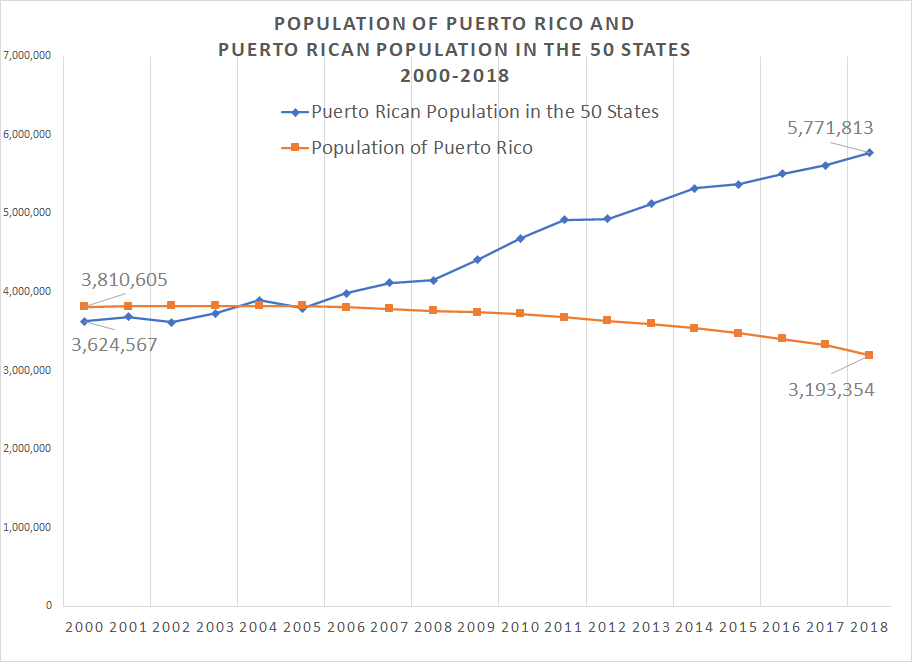
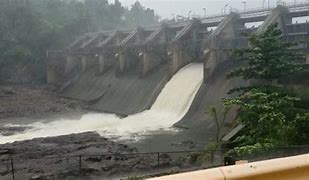 These companies served the largest cities and their peripheries
but in most rural areas, there was no electricity. According to the engineer
who presided over the foundation of the state–owned power company, Antonio
Luchetti, the private power companies were inefficient, offered poor service,
and overcharged customers.
These companies served the largest cities and their peripheries
but in most rural areas, there was no electricity. According to the engineer
who presided over the foundation of the state–owned power company, Antonio
Luchetti, the private power companies were inefficient, offered poor service,
and overcharged customers.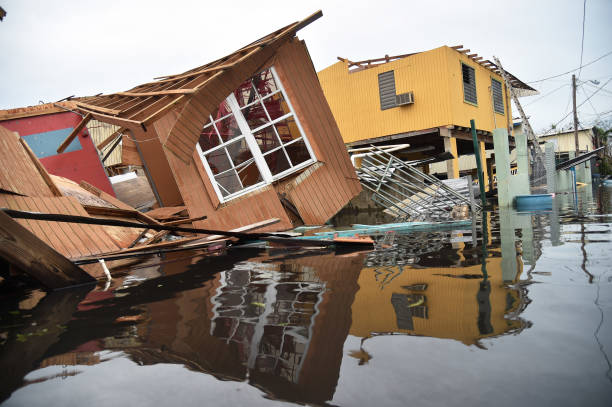
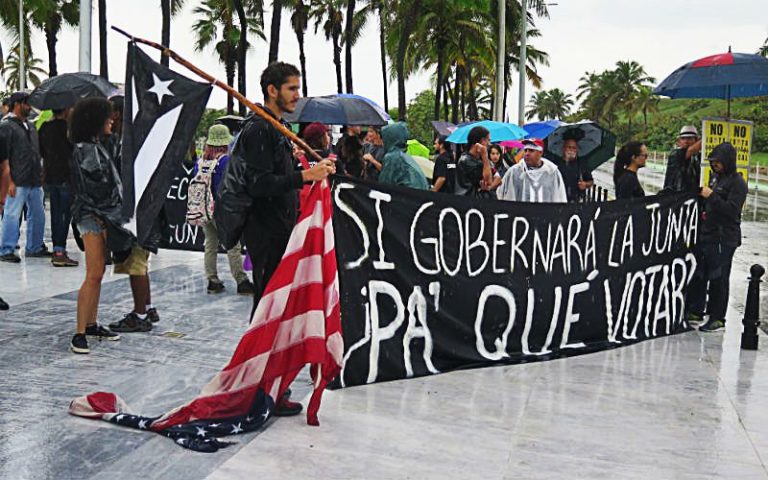
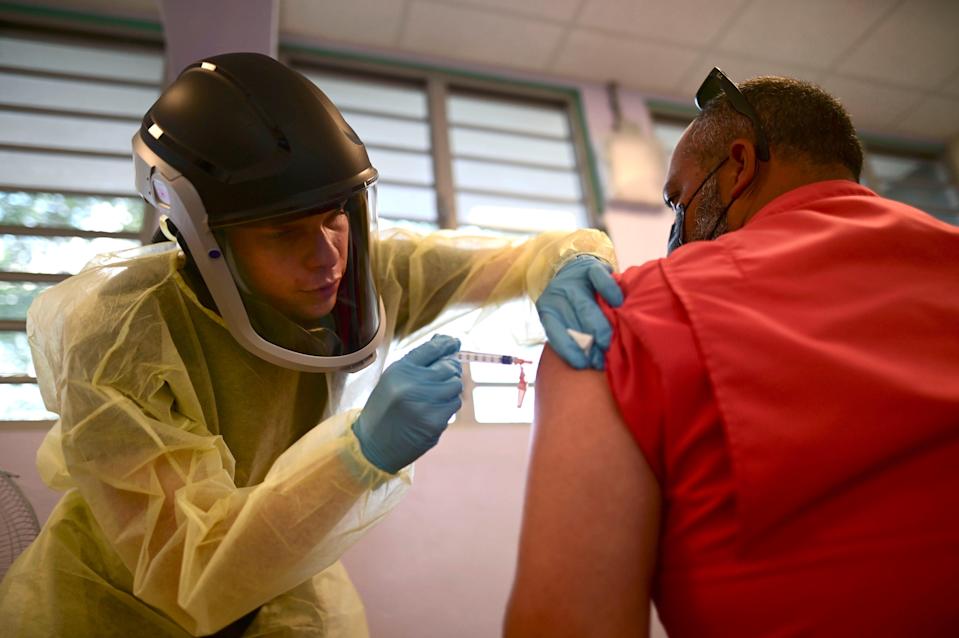 Among the states of the union, rates per 100,000 inhabitants range
from a high of 434 in Mississippi at the high end to 119 in Hawaii and 115 in
Vermont at the low end. Only two of the fifty states have lower death rates
from COVID than Puerto Rico. Eighty percent of the population of the island
is fully vaccinated against COVID, compared to 68% in the United States.
Despite the infrastructural problems, the Commonwealth’s public health
interventions were relatively successful
Among the states of the union, rates per 100,000 inhabitants range
from a high of 434 in Mississippi at the high end to 119 in Hawaii and 115 in
Vermont at the low end. Only two of the fifty states have lower death rates
from COVID than Puerto Rico. Eighty percent of the population of the island
is fully vaccinated against COVID, compared to 68% in the United States.
Despite the infrastructural problems, the Commonwealth’s public health
interventions were relatively successful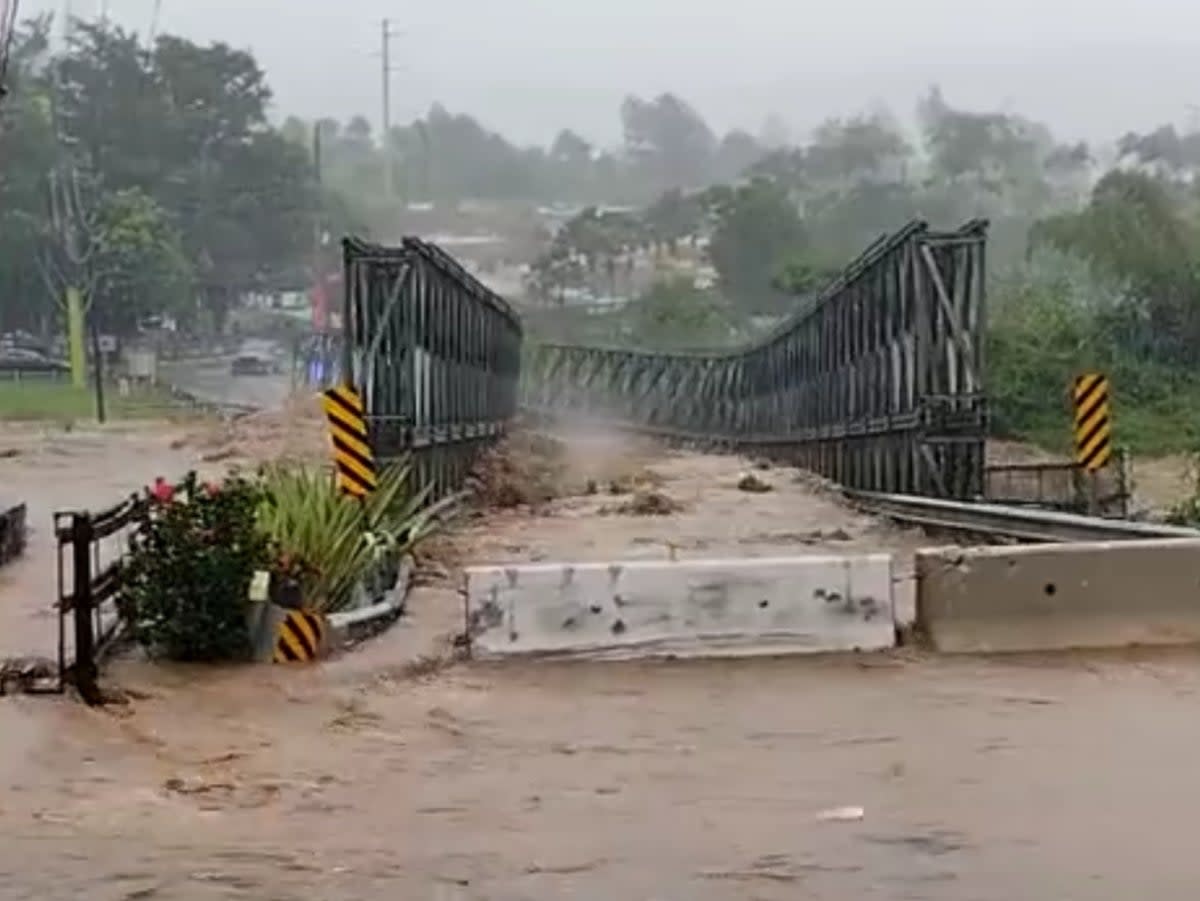 As was the case
with Maria, but on a much smaller scale, the majority of deaths seem to be
related to lack of access to medical services, and this deficit is in turn
due to lack of electricity or blocked roads. Many of the deaths are among
elderly people who live by themselves. As of the evening of Sep. 30, LUMA
reported that 88% of customers have electricity. Relative to the situation
after Hurricane Maria in 2017, these are encouraging figures. The
official death count is 25 as of September 30, 40 percent of the deaths are
among people over 75 years old and all of the deaths are of people over 50
years old. On October 4, Puerto Rico's Department of health confirmed the first death poduced by leptospirosis after hurricane Fiona.
As was the case
with Maria, but on a much smaller scale, the majority of deaths seem to be
related to lack of access to medical services, and this deficit is in turn
due to lack of electricity or blocked roads. Many of the deaths are among
elderly people who live by themselves. As of the evening of Sep. 30, LUMA
reported that 88% of customers have electricity. Relative to the situation
after Hurricane Maria in 2017, these are encouraging figures. The
official death count is 25 as of September 30, 40 percent of the deaths are
among people over 75 years old and all of the deaths are of people over 50
years old. On October 4, Puerto Rico's Department of health confirmed the first death poduced by leptospirosis after hurricane Fiona.